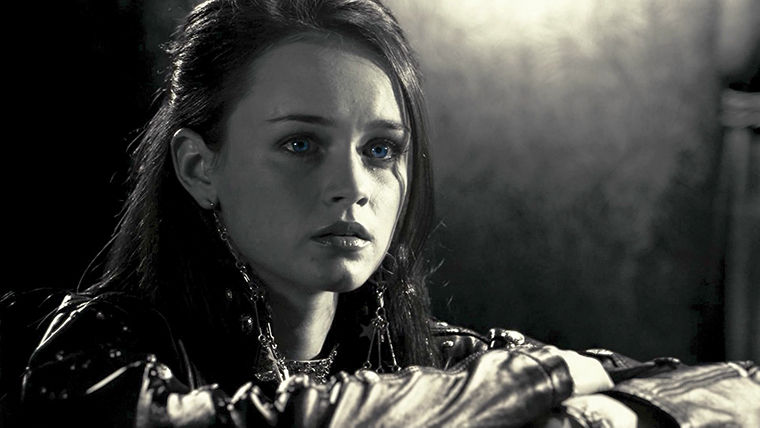‘Sin City’ ends summer with style, no substance
‘Sin City’ ends summer with style, no substance
September 2, 2014
In 2005, Robert Rodriguez and Frank Miller introduced moviegoers to “Sin City,” an adaptation of a comic book series revolving around dangerous criminals and the anti-heroes who stop them. Told in loosely intertwining segments, the film was notable for its use of vibrant black-and-white visuals and an unusual style that replicated the source material.
After being stuck in development for several years, its sequel, “Sin City: A Dame to Kill For,” finally hit theaters Aug. 22.
While the film is visually impressive, it lacks the gut-punching storytelling that made its predecessor shine.
Frank Miller, writer of the “Sin City” comic books, also adapted the series for the screen. The story that serves as the film’s subtitle, “A Dame to Kill For,” is easily the best story of the bunch. It follows Dwight (Josh Brolin) who struggles to overcome the allure of his ex-lover, Ava Lord (Eva Green) as she plans to use him as a pawn in a plot to steal her husband’s wealth. Dwight must team up with Marv (Mickey Rourke), a hulking crime-fighter, to bring down Ava and her titanic bodyguard Manute (Dennis Haysbert) in an act of vengeance. This story is more coherent than the others and boasts a satisfying story arc.
Green is a particular standout as she utilizes her classic Hollywood sex appeal to create a highly entertaining femme fatale. This story has enough substance to merit an entire film of its own.
The remaining segments are not nearly as fulfilling. One focuses on a lucky gambler named Johnny (Joseph Gordon-Levitt) and his attempt to take down the highly corrupt Senator Roark (Powers Boothe). Although Johnny is an engaging character and his plight is entertaining, his story has an unsatisfying conclusion and seems to end shortly after its climax. Another story focuses on Nancy (Jessica Alba), an alcoholic stripper with a vendetta against Senator Roark. Like Dwight, she enlists Marv’s help in a quest for vengeance. The uninspired segment acts as a lead-in for a flashy and violent conclusion that does too little for the characters. The visuals try to compensate for the severe lack of good storytelling but fails to create a sequel superior to its forerunner.
Using stark black and white contrast, “Sin City: A Dame to Kill For” is a visually gorgeous film that strives for a bleak film noir feel. Director, editor and cinematographer Robert Rodriguez uses typical noir lighting styles, such as casting shadows through venetian blinds and cigarette smoke, to enhance this theme. Rodriguez, best known for “Grindhouse” and “Once Upon a Time in Mexico” as well as the “Spy Kids” franchise, has done his best to visually replicate the beloved comic books. On occasion, vivid colors pop out against the background, a technique imported straight from the comics. This ranges from an outstanding facial feature like sparkling eyes to a bloody head wound. To magnify the effect, nearly every drop of blood in the film is red. Heavy use of voice-overs from several characters add an ethereal, impersonal but content-appropriate aesthetic. However, shoddy editing by Rodriguez ruins some moments. Some of the action scenes are bizarrely cut and it becomes difficult to fully understand the sequence of events.
Another major flaw is that the excessive sex and violence makes it lose its shock value quickly. By the time the final story rolls around, the violence packs no punch. In one of the final scenes where Marv and Nancy invade a heavily guarded mansion, Nancy uses a ridiculous pump-action crossbow while Marv employs the same brute force he used earlier in the film. The battle poses no challenge and the end result is a completely uninspired finale.
In addition to violence, the film relies too heavily on sex—Green spends an inordinate number of her scenes nude. The use of her nudity eventually becomes arbitrary and detracts from the overall story.
“Sin City: A Dame to Kill For” may boast special effects, but that’s not enough to redeem the film from a weak script and poor storytelling.








